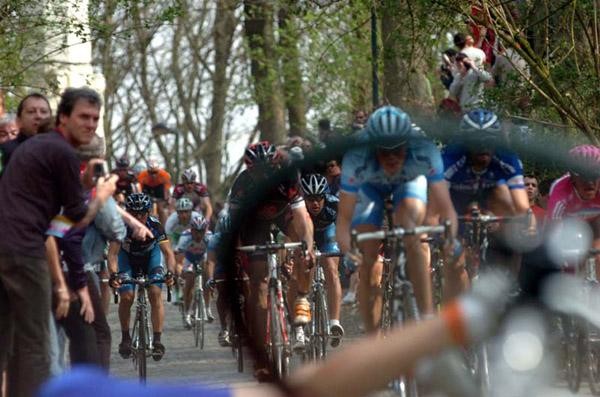Kemmelberg crashes - who or what is to blame?
On Wednesday, during Gent-Wevelgem, many riders suffered serious injuries on the cobbled descent of...

On Wednesday, during Gent-Wevelgem, many riders suffered serious injuries on the cobbled descent of the Kemmelberg, which has caused a widespread discussion. Luc Gheysens, organiser of the race, refused to take Kemmel out of the event as suggested by some, and said it is the riders' fault if they crash there.
"Then they must also take the cobblestones out of Paris-Roubaix, or the cols out of the Tour de France! Museeuw was nearly dead after his crash in Paris-Roubaix and Casartelli died in the descent of the Portet d'Aspet in the Tour," he bluntly told Sportwereld. "Races are dangerous. It is the fault of the riders if they don't have enough skills."
The most prominent victim of the Kemmelberg was Jimmy Casper, who smashed face-first onto the cobbles and slid for several meters with his face grinding into the stones, in full view of the TV camera. "Casper caused it himself," Gheysens claimed. "He collided with the wheel in front of him. Well, that's when you crash. They must learn to adapt their riving behaviour, to watch the distance between bikes, and keep their bidons in their bottle cages."
He refused to consider a new way down or around the Kemmelberg. "They now ride the safest possible descent from Kemmelberg. I do not want an alternative. That would kill Gent-Wevelgem."
Former Classics specialist Johan Museeuw had another theory for the many crashes, blaming them on the high rims of the bikes and the bottle cages. As soon as the first riders come to the cobbles, the bidons start bouncing out of their cages and exploding on the stones, creating a risk for the subsequent riders, especially those - like Jimmy Casper - with very high plastic rims.
"Those rims are splendid for open roads, but not for cobblestones," Museeuw told Sportwereld. "You come to Kemmelberg at 70 km an hour. Then you can be the best rider in the whole world, but you won't have your bike under control. 90 percent of the riders who fell had high rims."
Museeuw laid the blame on Unibet's supplier, Carbon Sports, which provides the team with lightweight carbon wheels, very stiff and long-lasting. Stefan Behrens of the company refuted the criticism, saying "Three riders tested our wheels on the cobblestones in January and February," with no problems.
The latest race content, interviews, features, reviews and expert buying guides, direct to your inbox!
The bottle cage discussion is not a new one, but "nothing is being done about it," Museeuw said. He expects to see more of the same in Sunday's Paris-Roubaix. "I see the bidons jumping from all sides. But the difference is that on flat cobbles with low rims, you have the chance to make a correction, which isn't possible on the descent of Kemmelberg."
Race director Hans de Clerc came up with a unique solution to the Kemmelberg problem: ban the spectators. "Certainly at the second passage of the descent, the spectators were an involuntary cause of the crashes," he told Sporza.
"To make it safe, we would have to take away the cobblestones and pave over the descent. But it is a national monument, so that will never happen. For that reason I would rather have no spectators in the descent. Anyone who stands there is only there for sensationalism, anyway."
Tom Van Damme of the Belgian cycling federation thought "the Kemmel does not belong in a race." He told the Gazet van Antwerpen that the federation could force the elimination of the Kemmelberg in future races. "Gent-Wevelgem is a ProTour race and the ProTour license comes from the UCI. But we have to approve the race application. But I don't think it will come down to that, as I already suspect that the organisers will give a binding recommendation to take out the Kemmel. We don't want to responsible for more problems."
